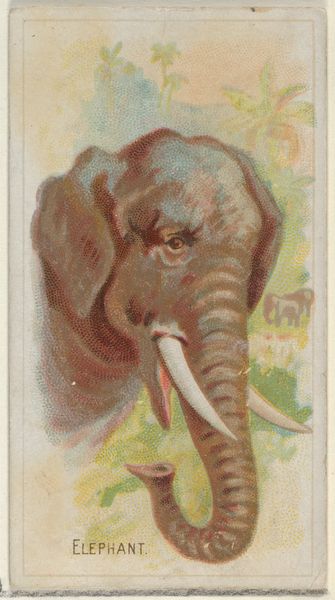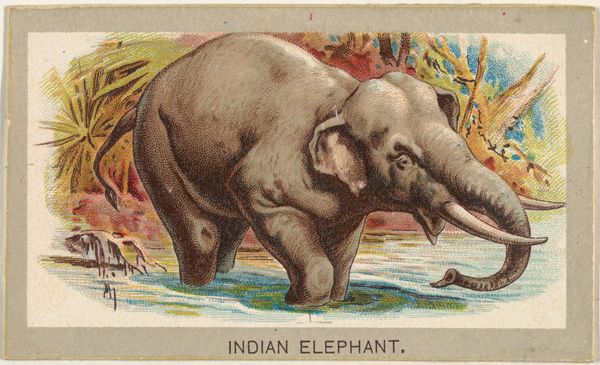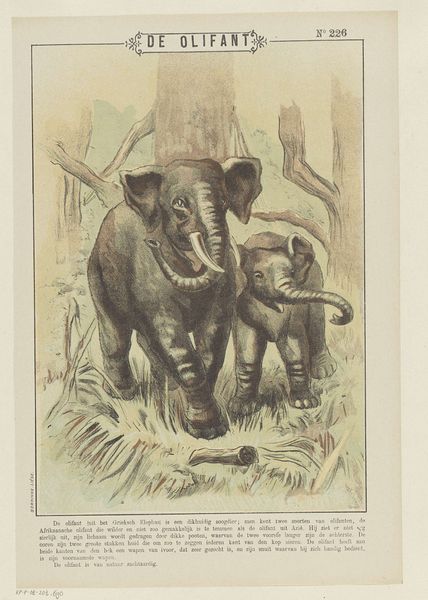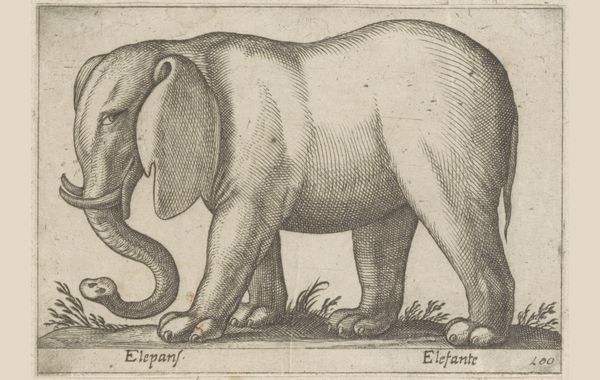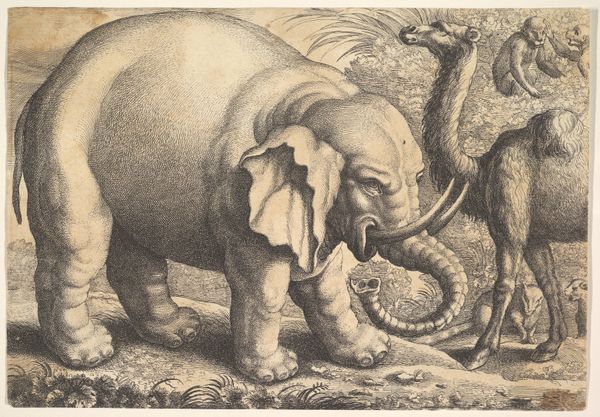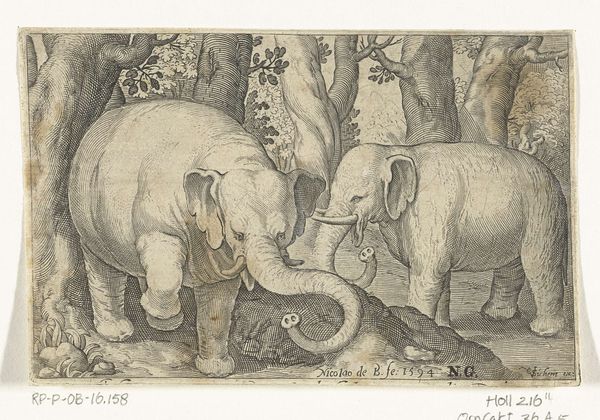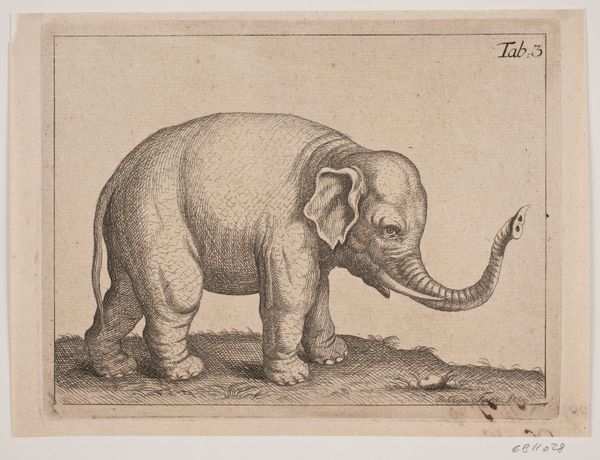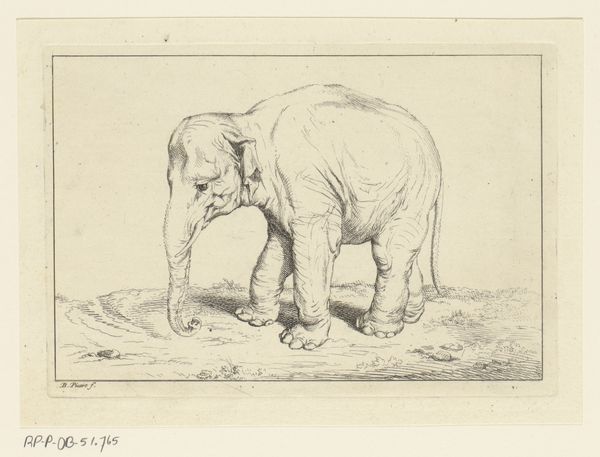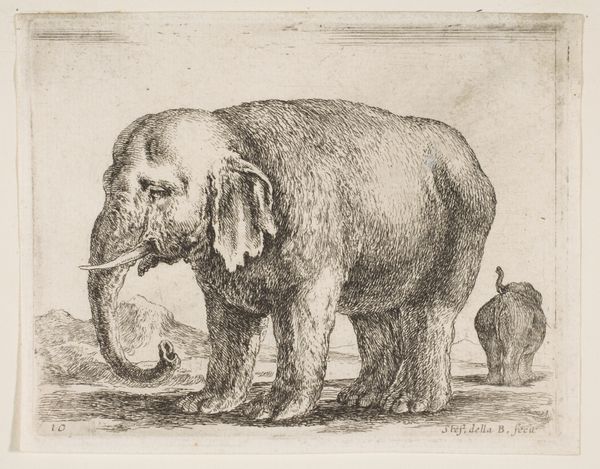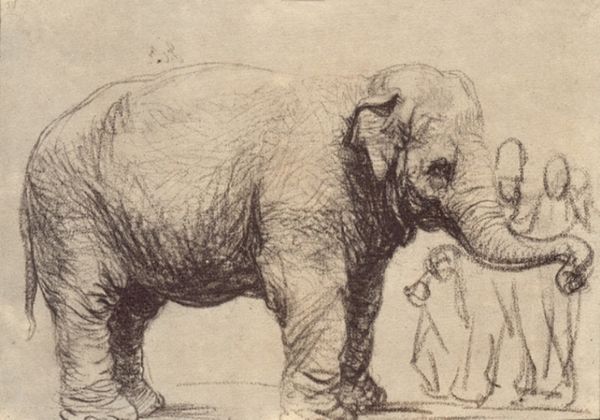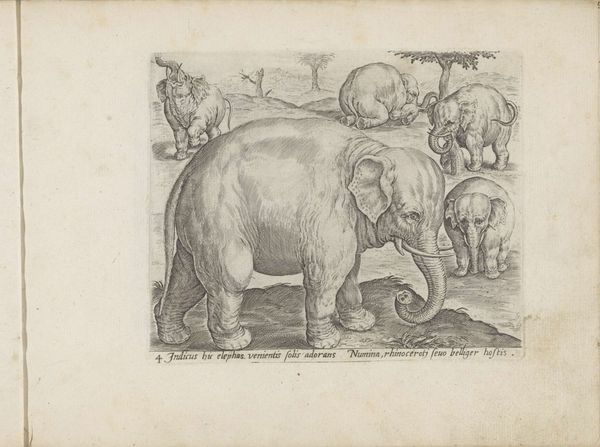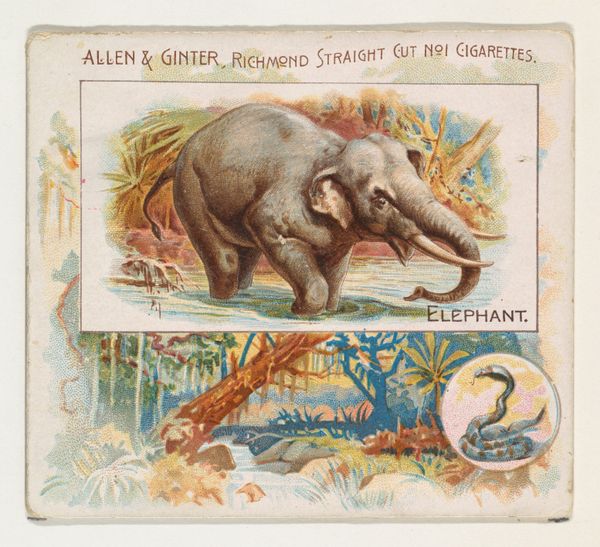
Elephant, from the Quadrupeds series (N21) for Allen & Ginter Cigarettes 1890
0:00
0:00
# print
#
landscape
#
coloured pencil
#
watercolour illustration
Dimensions: Sheet: 1 1/2 x 2 3/4 in. (3.8 x 7 cm)
Copyright: Public Domain
Editor: So this is "Elephant, from the Quadrupeds series" made in 1890, by Allen & Ginter. It looks like a coloured-pencil drawing or a print of one. I’m struck by the detail on the elephant's skin, and the colors in the water look unnatural. How do you interpret this work? Curator: Well, this little card holds more than meets the eye. The image immediately reminds us of strength and the exotic “Orient.” Given its origin as a cigarette card, consider its circulation during a time of growing interest in Eastern cultures, a movement known as Japonisme. How does that context shift your understanding? Editor: So, it's not *just* an elephant, it represents a broader fascination? I can see that. But cigarette cards… were they trying to associate smoking with, like, worldly sophistication? Curator: Precisely. Cigarette cards often aimed to cultivate aspiration, subtly linking their product with the allure of faraway lands and noble creatures. This image flirts with the idea of the elephant as a symbol of wisdom and power, but also conquest, particularly in an exotic landscape. Do you notice how the colors aren't quite "real?" Editor: Yeah, it feels staged. Almost like a postcard rather than something true to life. Curator: Exactly. That stylized rendering pulls from artistic trends idealizing "nature," bending reality to cultural expectation. The image functions almost as a cultural shorthand, embedding shared dreams of distant places onto the smoker's everyday habit. Editor: So it’s an ad, but it tells a bigger story about cultural trends and how we project our ideas onto animals and landscapes. It gives you a lot to think about. Curator: Indeed. These symbols ripple outward, linking consumerism to identity, and the animal to something beyond simple recognition.
Comments
No comments
Be the first to comment and join the conversation on the ultimate creative platform.
